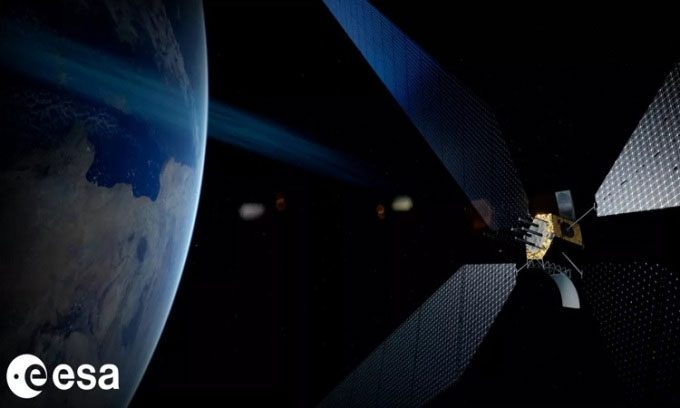The European Space Agency (ESA) will call on member states to fund a solar power program in space during an important meeting at the end of this year.

Design of the solar power transmission satellite from space. (Photo: ESA)
The Solaris Program will explore the potential of Space-Based Solar Power (SBSP) to provide clean energy and contribute to reducing carbon emissions. The program will collaborate with industries to assess technical feasibility, benefits, implementation strategies, commercial opportunities, and risks associated with the new technology, Space reported on August 20.
SBSP involves collecting solar energy using gigantic photovoltaic panels in geostationary orbit, at an altitude of 36,000 km, where satellites appear to hover over a fixed point. Unhindered by the Earth’s atmosphere, solar power plants in space will produce electricity more efficiently than ground-based plants and transmit energy back to Earth for conversion into electricity.
The European Space Agency (ESA) describes the Solaris program as a solution to the current climate change crisis, providing clean, affordable, continuous, abundant, and safe energy. ESA aims to develop SBSP by 2025.
“Solar power in space is a crucial step towards carbon neutrality and energy independence for Europe,” Josef Aschbacher, ESA’s Director General, shared via Twitter on August 16. “Two recent independent studies encourage investment to promote the technologies needed to address the energy crisis.”
The Solaris initiative will be presented to the Council of Ministers in November, but ESA has not disclosed information regarding funding. The ultimate goal of SBSP is to help Europe achieve its carbon neutrality target by 2050. The concept of SBSP first emerged in the 1960s and has garnered significant interest from various countries. China is planning to conduct orbital tests before the end of the decade as a stepping stone towards a gigawatt-scale power system by the mid-21st century.





















































